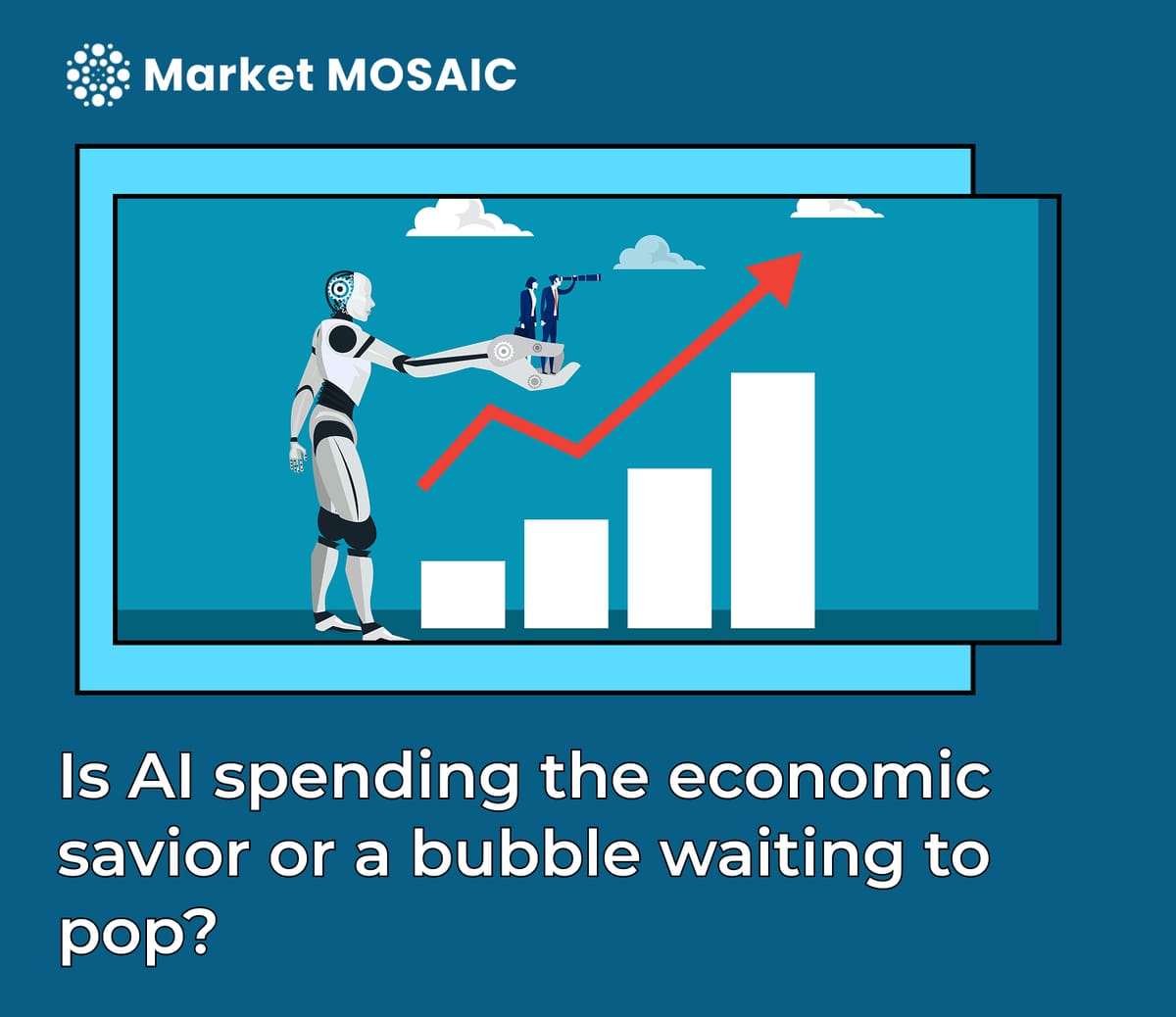Is AI spending the economic savior or a bubble waiting to pop?
AI spending is powering U.S. growth, adding 1.3 points to GDP, but cracks are showing; weak consumer demand, rising bankruptcies, and market dependence on tech giants. If promised productivity gains fall short, today’s boom could become tomorrow’s costly bubble

AI’s outsized role in the economy
AI isn’t just the shiny new toy of Silicon Valley anymore. It has become the muscle keeping the U.S. economy moving. Last quarter, money poured into AI infrastructure added 1.3 percentage points to GDP growth. To put that into perspective, one sector’s spending carried almost half of the nation’s economic growth. Not even the internet boom at its peak could claim that.
The big money moves
Tech giants are now spending about $69 billion every quarter on the data centers, networks, and computing power that drive AI. By next year, that annual total is expected to reach $320 billion, nearly 40% higher than last year. Google, Microsoft, Amazon, and Meta are leading the charge, with combined investments on track to surpass $750 billion over the next two years. This isn’t just investment—it is a national economy-sized wager on the future.
Private equity firms such as Apollo, Blackstone, and KKR are also stepping in, financing a building spree that could top $3 trillion. Cisco has reported AI infrastructure orders more than double what it expected, while Foxconn has shifted from primarily making iPhones to becoming a major AI server supplier, with server revenues expected to triple in the third quarter.
Cracks beneath the surface
Every surge comes with risks. Consumer spending, which drives 70% of the U.S. economy, grew just 0.9% last quarter and is stagnating in real terms. Bankruptcy filings have climbed to their highest level since 2010, hitting sectors like retail and manufacturing the hardest. The stock market’s gains are increasingly concentrated in a small group of mega-cap tech companies, raising fears of an economy overly dependent on one sector’s fortunes.
The productivity gamble
Economists can’t seem to agree on where this is headed. The optimists say that if AI can nudge productivity up by even 0.5% a year, it could keep the economy humming for decades and take some weight off the national debt. In their view, that kind of lift would be enough to justify today’s spending spree.
The skeptics aren’t buying it. They point to history’s graveyard of grand infrastructure bets; the 19th-century railroad overbuild, the early-2000s telecom crash where sky-high expectations turned into empty capacity and painful write-downs. The worry is simple: what if the AI revolution doesn’t arrive fast enough, or at the scale promised? Then all that glass-and-steel in the form of data centers might stand as monuments to a bet that didn’t pay off.
Insight for business leaders
For business leaders, the path forward is about balancing ambition with discipline. AI offers immense potential, but its rewards will favor those who move decisively while managing risk. That means building flexible, scalable infrastructure that can evolve with the technology. It means ensuring every major initiative is tied to clear, measurable outcomes so that progress and returns can be tracked. It also means diversifying across markets, sectors, and funding models to avoid being overexposed to a single bet.
AI may well define the next decade of business, but it is not a “set and forget” investment. It demands ongoing oversight, adaptation, and strategic course corrections.





